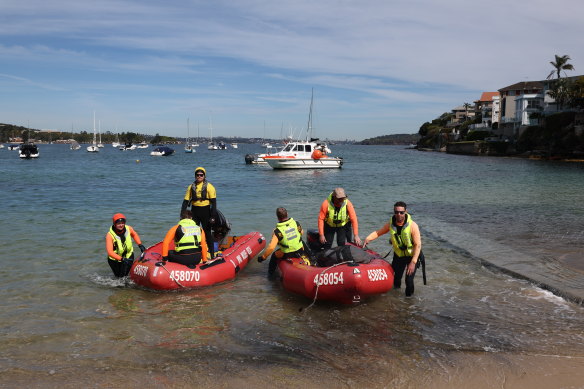
Staying with the press conference, NSW National Parks and Wildlife Service Area Manager Ben Khan said the rescue was “complicated”.
“We’ve got a live animal that’s very, very large,” Khan said. “The entanglement was around its tail - it was quite a simple entanglement, but it was a very active animal so it had to be done very carefully this morning.”
Khan said it took quite a few attempts to get the whale to slow down to the point where the team could safely cut the debris from its tale.

Rescue workers responsible for freeing an entangled whale arrive at Little Manly Beach.Credit: Dominic Lorrimer
After abandoning the effort at sunset last night, the team was back on on site by 7.30am this morning, and it took until 11.15am to free the whale.
“Once it was cut free, it took off free swimming, and looked fantastic,” Khan said.
Khan said it was about 13 metres long, which gave it a sub-adult to young adult age. (A sub-adult is five to eight years, while an adult is over nine years, but this means the whale was probably older than a juvenile, as previously estimated).
Khan said the team was not concerned about the whale beaching itself, but criticised the number of drones and helicopters in the air following the whale.
“Drones and aircraft are a real challenge, they don’t mix very well,” Khan said. “We are going to get more whales in the harbour this season, hopefully not entangled. Where there are drones and helicopters - if we could just keep drones out of the picture.”
While he did not say so, an exception would be the ORRCA drone, which was licensed to operate and played a role in the rescue mission by providing information to NPWS.



























